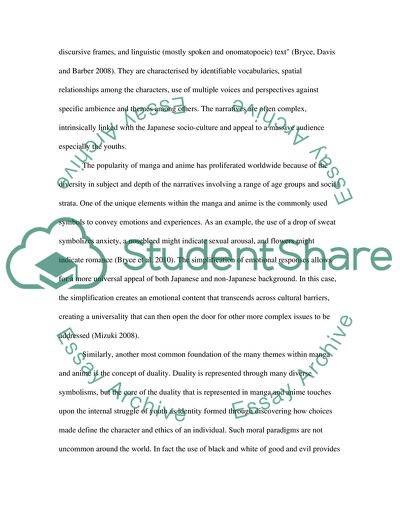Cite this document
(Manga and Anime as Japanese Comic Books Case Study Example | Topics and Well Written Essays - 1250 words, n.d.)
Manga and Anime as Japanese Comic Books Case Study Example | Topics and Well Written Essays - 1250 words. https://studentshare.org/culture/1739189-using-appropriate-8364732manga83648482-or-anime-examples-write-an-analytic-essay-manga-and-japanese-contemporary-culture-unit
Manga and Anime as Japanese Comic Books Case Study Example | Topics and Well Written Essays - 1250 words. https://studentshare.org/culture/1739189-using-appropriate-8364732manga83648482-or-anime-examples-write-an-analytic-essay-manga-and-japanese-contemporary-culture-unit
(Manga and Anime As Japanese Comic Books Case Study Example | Topics and Well Written Essays - 1250 Words)
Manga and Anime As Japanese Comic Books Case Study Example | Topics and Well Written Essays - 1250 Words. https://studentshare.org/culture/1739189-using-appropriate-8364732manga83648482-or-anime-examples-write-an-analytic-essay-manga-and-japanese-contemporary-culture-unit.
Manga and Anime As Japanese Comic Books Case Study Example | Topics and Well Written Essays - 1250 Words. https://studentshare.org/culture/1739189-using-appropriate-8364732manga83648482-or-anime-examples-write-an-analytic-essay-manga-and-japanese-contemporary-culture-unit.
“Manga and Anime As Japanese Comic Books Case Study Example | Topics and Well Written Essays - 1250 Words”. https://studentshare.org/culture/1739189-using-appropriate-8364732manga83648482-or-anime-examples-write-an-analytic-essay-manga-and-japanese-contemporary-culture-unit.


